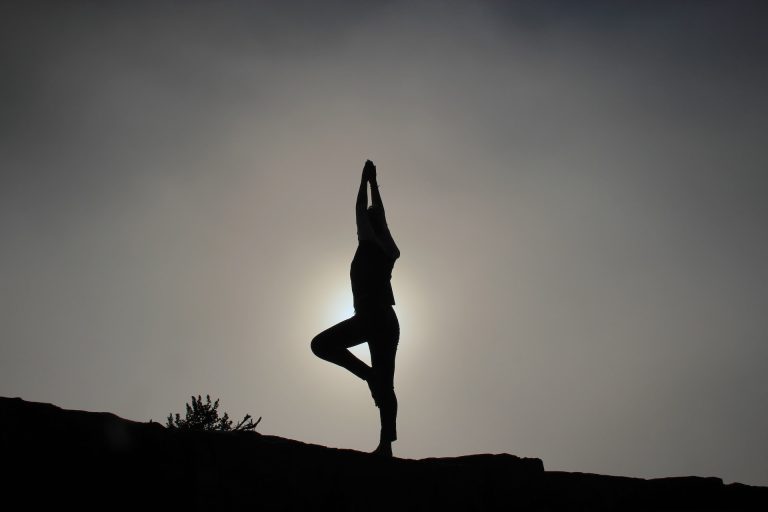Karate Attack Techniques – Explained in Detail
Karate is a popular martial art that originates from Japan. It involves controlled movements and strikes that aim to overpower or subdue an opponent. Karate techniques can be used for self-defense, competitive sport, or general fitness. However, the most important aspect of karate is not how to attack, but rather how to defend yourself from attackers. In this article, we will explore some of the most effective karate attack techniques that can be utilized by a practitioner.
The Basic Types of Karate Attacks
Before diving into the specific techniques, it’s essential to understand the basic types of karate attacks. These are:
1. Strikes – These are blows delivered with various parts of the hand, fist or feet. The different types of strikes include punches, chops, hammer fists, elbow strikes, knee strikes, kicks, and many more.
2. Blocks – Blocks are used to deflect strikes and attacks, providing opportunities for counter-attacks. These can be done using the arms, legs, or even the torso.
3. Grappling – This type of attack involves grabbing and subduing an opponent using throws, locks, and chokes.
4. Throws – Throws are used to off-balance an opponent and throw them onto the ground. These can be done using the hips or legs.
Now that we know the basic types of karate attacks let’s look at some of the most effective techniques.
1. Front Kick
The front kick is perhaps the most basic karate technique, but it’s also one of the most effective. To execute a front kick, stand with your feet shoulder-width apart and then lift your knee to your chest before extending your leg forward to strike the target with the ball of your foot. The front kick can target an opponent in various areas, including the torso, head, and legs.
2. Roundhouse Kick
The roundhouse kick is a powerful karate technique that involves rotating the hip and leg to strike the target from the side. To perform a roundhouse kick, stand with one leg in front of the other, and then pivot your back leg to rotate your hip and strike the target using the outside of your foot. The roundhouse kick is effective against opponents who are at a distance.
3. Straight Punch
The straight punch is one of the most powerful karate attack techniques. To execute a straight punch, stand with your feet shoulder-width apart and then extend your arm forward as you punch the target with your fist. You can target various areas of an opponent’s body, including the stomach, chest, face, and nose.
4. Side Kick
The sidekick is a powerful karate technique that involves attacking an opponent’s side with the heel of your foot. To execute a sidekick, stand with your feet shoulder-width apart and then bring your knee up to your chest before extending your leg outward to strike the target with the heel of your foot. The sidekick is typically targeted at the opponent’s torso.
5. Hammer Fist Strike
The hammer fist strike is a karate attack technique that involves striking with the bottom of your fist, just above your wrist. It’s a useful technique for using the body’s weight to generate increased power. To execute a hammer fist strike, raise your arm above your head and then drop it down to strike the target with the bottom of your fist.
6. Axe Kick
The axe kick is a karate technique that is executed by using the heel of your foot to strike the target from above. It’s an effective technique for controlling an opponent and for targeting specific areas of their body, such as the head, shoulders, or collarbone. To execute an axe kick, raise your leg high before bringing it down forcefully to strike the target with the heel of your foot.
Most Frequently Asked Questions About Karate Attack Techniques
As a discipline that originated from Okinawa, Japan, Karate has become a popular martial art, with its techniques taught worldwide. In this post, we’ll explore some of the most frequently asked questions about Karate attack techniques.
What are the basic attack techniques in Karate?
Karate includes a variety of attack techniques that are designed to strike an opponent in different ways. The most basic techniques are referred to as strikes, punches, kicks, and blocks.
Strikes are performed using the hand or the forearm, and their aim is to hit the opponent with a powerful blow. Punches are similar to strikes, but they’re performed using a closed fist. Kicks involve hitting the opponent with a leg, foot, or knee, depending on the type of kick being used. Finally, blocks are defensive techniques that are used to deflect an incoming attack.
What is a front kick?
One of the most basic Karate attack techniques is the front kick, also known as Mae Geri. It involves lifting the leg and striking the opponent with the ball of the foot. The front kick can be performed with either leg and can be used to attack the opponent’s groin or stomach area.
What is a roundhouse kick?
Another popular Karate attack technique is the roundhouse kick, or Mawashi Geri. It’s performed by raising the leg and turning the body to land a strike with the ball of the foot or heel. This technique is versatile and can be used to target different areas of the opponent’s body, such as the head or ribs.
What is a palm-heel strike?
A palm-heel strike, or Shotei Uchi, is a Karate technique in which the hand is shaped like a knife and used to strike the opponent’s body. It’s performed by hitting the opponent with the base of the palm in a forward motion. This technique can be used to target the nose, throat, or solar plexus.
What is a block?
Blocks are defensive Karate techniques that are used to deflect an opponent’s attack. The most common types of blocks include high block, middle block, and low block. A high block is used to protect the head, while a middle block protects the torso. A low block, on the other hand, is used to protect the legs.
Can Karate attack techniques cause serious injury?
Karate attack techniques are designed to cause damage to the opponent’s body, so they can potentially cause serious injury. However, the risk of injury can be minimized by practicing proper technique and using protective gear.
Is Karate suitable for self-defense?
Yes, Karate is a suitable option for self-defense. Its attack techniques can be used effectively to defend oneself against an attacker. However, it’s essential to receive proper training and practice regularly to be able to use the techniques effectively.
What is a kata in Karate?
A kata is a sequence of movements performed in a specific order. It’s used to practice Karate techniques and develop muscle memory. Kata can be performed individually, with a partner, or in a group.
How to Execute Effective Karate Attack Techniques
Karate is an ancient martial art form that has long been used for self-defense or competitive purposes. Karate attack techniques have been widely studied and practiced in most countries around the world. Karate techniques are highly effective if executed correctly; however, it requires a lot of training and patience before perfecting it. In this post, we will explore the proper steps to execute effective karate attack techniques.
Step 1: Understand The Basics
Before you can execute any karate attack technique properly, you must first understand the basic steps involved. The basics include stances, strikes, kicks, and blocks. It’s critical to master these basic techniques to execute any attack or defense properly. Once you have mastered the basics, you can then proceed to the advanced techniques.
Step 2: Focus on Body Stance
The body stance is critical in Karate practice as it helps with stability and balance while performing an attack or defense. The Karate stance is a very stable yet flexible posture that helps maintain balance and stability during action. To get into a proper Karate stance, stand with your feet shoulder-width apart and keep your body weight evenly distributed on both feet evenly.
Step 3: Develop Proper Breathing Technique
Proper breathing is another critical aspect of executing successful karate attack techniques. Breathing helps in maintaining balance, focus, and control throughout the process. Always make sure to take deep breaths before performing an attack, and exhale while striking your target.
Step 4: Perfect Your Body and Hand Movements
Karate attack techniques require perfect coordination between the body movements and hand movements. It’s essential to master the techniques of using the knee, elbow, fists, and legs effectively. One simple yet powerful technique is the straight punch. To execute it properly, align your elbow with your wrist and line your toes up with your knuckles, then move forward while striking with your fist.
Step 5: Train Regularly
To execute karate attack techniques accurately, you must practice them regularly. Practicing regularly helps to strengthen your body and improve your technique. Practicing with a partner can improve timing and accuracy.
Step 6: Try Different Attack Techniques
Karate attack techniques are not one-size-fits-all, and different techniques will work better than others depending on the situation. Try to practice different techniques such as the snap kick, sidekick, roundhouse kick, palm strike, and hammer fist. This will help make you more versatile and adjust to different situations.
Step 7: Remain Calm and Focused
Karate is not just about executing attack techniques; it’s also about character-building. During an attack, it’s crucial to remain calm and focused despite the stress and pressure. Staying calm and focused will help you execute the technique correctly and maintain control over the situation.
Step 8: Always Keep Safety in Mind
Karate attack techniques can be dangerous if not executed carefully. Always keep safety in mind when practicing or using these techniques. Practice with protective gear, and only use these techniques in real-life scenarios when necessary.
Conclusion
Executing effective karate attack techniques requires dedication, patience, regular practice, and thorough understanding of the technique. With proper guidance and training, anyone can learn how to execute these techniques successfully. Always stay calm, focused, and practice safely to avoid any unnecessary injuries. Remember that karate is not just about executing attacks, but also about character-building and discipline. So, with that said, happy practicing!
Inhaltsverzeichnis





